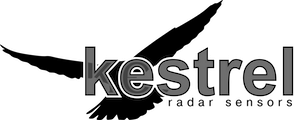FAQ’s & Information
We have put together our frequently asked questions and some additional information. We have tried to provide you with as much information as possible but if you need to know anything else just get in touch, we will be happy to help with any additional queries you may have.
General FAQ’s
Both Google maps and Open street maps can be used depending on the accessibility to the internet.
The K2 Pico Radar is a completely flexible platform and fully integrated with our Kestrel Workbench software, this all new front end software platform allows the user to effectively define the functionality of the devices in a system.
It not only allows the user to control specific trigger conditions but can also be used to initiate communications functions when a specific event occurs. The process is controlled through a scripting language, the scripts functionality can be fully tested within the Kestrel Workbench using our simulator. The script can then be loaded directly to the connected radar and it will perform in exactly the same manner as it did in the simulator.
We keep full control over all aspects of hardware design, software development to part procurement through to final production and test. We have invested heavily with in-house manufacturing and have the very latest generation of state of the art Surface Mount Manufacturing facilities. See our website for details.
Our K2 series is available in a plug and play kit (radar+sign) which makes it even easier for OEM’s to integrate as it provides a cable free solution.
K2 FlexAR Products FAQ’s
Yes, absolutely. We took the design decision to switch to a virtual machine system because we were always tweaking the firmware and modifying operational modes to suit specific customer requirements. As time went on, this task became more difficult to do and to maintain as the number of modes increased and the complexity got higher.
We have made the task of providing these custom modes easier for ourselves by abstracting it and allowing the “detection application” to be separate to everything else that the radar has to do. We can provide modes quickly and easily without needing firmware changes and without fear of breaking any existing modes of operation and it allows either us or the OEM to define how the radar will operate.
Firstly, you need to check if you absolutely need this extra board any more. The virtual machine on the radar may mean that you can put the logic that was contained in this extra board directly onto the radar itself, not only will you reduce your costs but you will save power by not having additional electronics.
If you still decide that you need your external board, the radar has 4 onboard outputs which can be PWM modulated in addition to a serial port which can be controlled by the virtual machine. Either of these can be used to interface to your electronics.
There are a number of ways of updating the firmware on the radar. You can connect the radar to a PC using a standard micro USB cable (or bluetooth or via modem) and use Kestrel Workbench to connect to and then update the firmware on the device.
You can also copy the firmware onto a memory stick and using an adaptor cable connect this to the radar, the radar will automatically reboot and update the device with the firmware stored on the memory stick.
No. The K2 uses a built in memory device to provide 4GB depending on which device was fitted in the factory.
It is extremely unlikely that you would ever have a situation where you required more storage capacity than we already provide.
No, the memory device on the K2 is built on board and is not removable like the K1 series radars.
However, the bootloader on the radar does support the USB Mass Storage class, so connecting the radar to the PC and powering it up in bootloader will result in a removable disk appearing inside Windows which will allow data to be transferred to or from the “disk”.
K1 Legacy Products FAQ’s
Our aim is to add support for K1 series radars back into Workbench at a future point, the modular design of Workbench means that this can be done in stages.
K1 series radars can still be operated with the TrafficApp software.
The K2 uses our custom communications bus to allow multiple devices to be connected at the same time and therefore Modem, ZigBee, Bluetooth and GPS can all be connected and operating at the same time.
